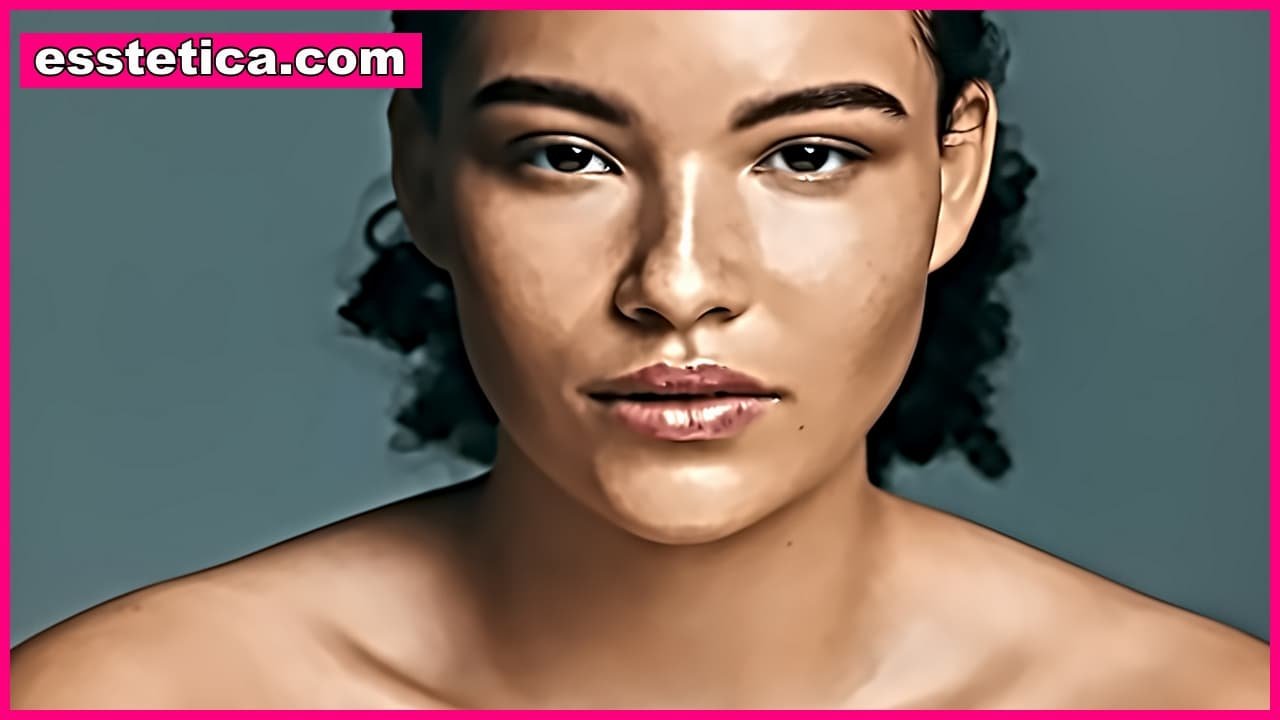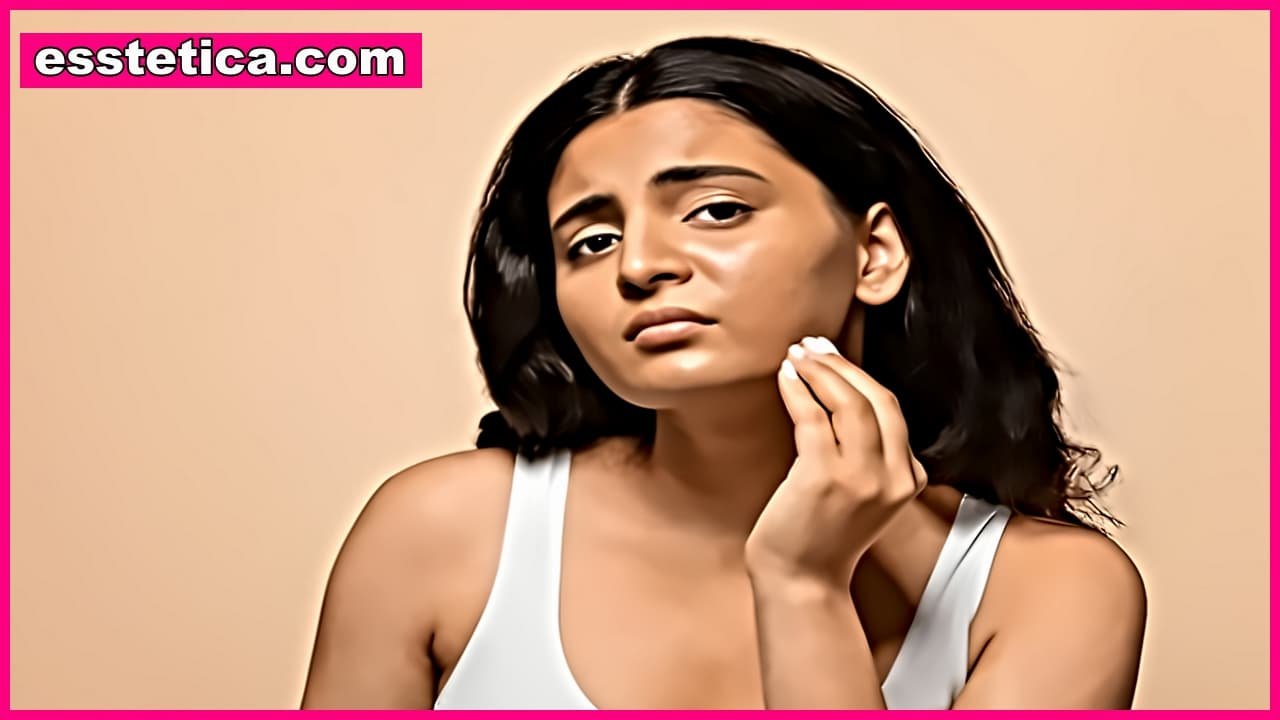Introduction
There’s nothing quite like that deep, throbbing pain under your skin — the kind that makes you wince when you wash your face or accidentally brush your cheek. You touch it, and it feels like a tiny volcano ready to erupt. That’s painful acne — and it’s more than just a surface problem.
When acne hurts, it’s your body sending you a very clear message: something deeper is happening beneath the skin.
Painful acne can mean inflammation, infection, pressure, or even hormonal imbalance. And understanding why it hurts (and how to calm it) is the first step to healing it — not just covering it up.
So, let’s dig beneath the surface and uncover what’s really going on when acne hurts — and what you can do about it.
What It Means When Acne Hurts
1. Inflammation Is in Overdrive
When acne hurts, it’s almost always because inflammation has taken center stage. Your immune system detects bacteria inside a clogged pore and launches an attack — sending white blood cells to fight the invaders.
The result? Swelling, redness, pressure… and pain.
That’s your body’s way of saying, “I’m trying to fix this.” But when inflammation goes unchecked, it can also damage nearby tissue, leading to the kind of cystic, painful acne that takes weeks to heal.
2. The Acne Is Deep Beneath the Skin
Not all pimples are created equal.
Some live quietly on the surface — easy to pop (though you shouldn’t).
Others, though, form deep inside the skin’s layers.
These are called nodules or cysts, and they’re the usual suspects when acne hurts.
Because they’re buried beneath the skin, the inflammation doesn’t have anywhere to go — it’s trapped, pressing against nerves and surrounding tissue. That’s why these spots feel sore even when you don’t touch them.
3. There’s Pressure from Blocked Sebum and Dead Cells
Acne forms when oil, bacteria, and dead skin cells block your pores. But when that blockage sits deep under the skin, pressure starts to build.
It’s like a balloon inflating beneath your face — and your nerves don’t like that one bit.
If you’ve ever felt a painful lump that hasn’t “come to a head” yet, that’s a classic case of trapped pressure and inflammation.
Types of Painful Acne
Not all painful pimples feel the same — and that’s your first clue to understanding what kind you’re dealing with.
1. Cystic Acne
These are the big, deep, painful lumps under the skin — sometimes the size of a pea or even a marble.
They’re filled with pus and inflammation, but they rarely surface.
Pain level: 🔥🔥🔥 (Severe)
Cause: Hormones, genetics, or chronic inflammation
2. Nodular Acne
Similar to cystic acne but slightly firmer, nodules are deep, inflamed bumps that don’t always contain pus.
They can last for weeks or months and hurt when touched.
Pain level: 🔥🔥 (High)
Cause: Deep blockage of oil glands and bacterial buildup
3. Papules and Pustules
Papules are small, red, inflamed pimples that hurt to the touch.
Pustules, on the other hand, have that white or yellow “head” filled with pus.
Pain level: 🔥 (Mild to moderate)
Cause: Blocked pores with surface inflammation
4. Hormonal Breakouts (Especially on the Jawline)
If your acne flares up during your period, around your chin, or along your jawline — it’s often hormonal.
These pimples are tender and sometimes cystic in nature.
Pain level: Variable
Cause: Hormonal fluctuations (androgens stimulating oil production)

✅ Struggling with acne? Discover the 2 natural solutions I personally recommend:
👉 Get Ninja Health Now — Launch Your Health Site in 60 Seconds
Why Does Acne Hurt More Sometimes?
Sometimes acne just feels more painful than usual — even if it looks mild. Here’s why:
1. Your Immune System Is Hyperactive
Some people’s immune systems react more aggressively to acne bacteria, causing more swelling and pain than others.
2. You’ve Picked or Squeezed It
Let’s be honest — we’ve all done it. But squeezing acne makes inflammation worse.
When you apply pressure, bacteria spread deeper into the skin, turning a small pimple into a throbbing lump.
3. Hormones Are Fluctuating
During hormonal changes (like menstruation, puberty, stress, or pregnancy), oil glands go into overdrive.
More oil = more clogged pores = deeper, more painful acne.
4. Skin Barrier Damage
Using harsh cleansers or over-exfoliating can strip your skin barrier, making it extra sensitive. Even mild breakouts can then feel painful or irritated.
When Acne Hurts: Signs It’s More Than a Pimple
Sometimes, that painful spot might not be “regular” acne at all. It could be something else entirely.
1. Boils (Furuncles)
These look and feel like cystic acne but are actually infections of the hair follicle, often caused by Staphylococcus bacteria.
They’re extremely tender and can fill with pus.
2. Folliculitis
A mild infection of hair follicles that mimics acne. It can sting or burn, especially on the chest, back, or thighs.
3. Rosacea or Perioral Dermatitis
These can cause acne-like bumps that are painful or stinging but aren’t true acne.
If the pain is persistent or spreading, a dermatologist can distinguish between these conditions.
What to Do When Acne Hurts
Now that you know why acne hurts, let’s talk about how to relieve the pain — without making it worse.
1. Ice It — Gently
Cold compresses are your best friend.
Wrap an ice cube in a clean cloth and hold it on the sore area for 1–2 minutes.
This reduces inflammation, swelling, and nerve sensitivity.
Repeat a few times a day to calm the pain.
2. Don’t Pop or Squeeze
It’s tempting — but popping a painful pimple is like trying to open a volcano. You’ll only drive bacteria deeper, leading to a bigger, angrier lump (and a potential scar).
Instead, let it run its course. Your goal is to calm it, not attack it.
3. Apply a Warm Compress (for Cysts)
If the pimple feels like it’s buried deep, a warm compress helps soften the blockage and improve circulation.
Use a clean towel soaked in warm (not hot) water and press gently for 5–10 minutes.
This can help bring the inflammation closer to the surface or reduce swelling altogether.
4. Use Anti-Inflammatory Ingredients
When acne hurts, your goal is to reduce inflammation — not just kill bacteria.
Look for these ingredients:
-
Niacinamide: Calms redness and irritation.
-
Benzoyl Peroxide: Kills acne bacteria and reduces swelling.
-
Salicylic Acid: Unclogs pores and removes debris.
-
Azelaic Acid: Fights both inflammation and bacteria gently.
If the acne is cystic, a prescription retinoid or antibiotic might be necessary.
5. Hydrate Your Skin
Dehydrated skin produces more oil, worsening acne.
Use a lightweight, non-comedogenic moisturizer with ceramides or hyaluronic acid to keep the barrier strong.
6. Avoid Overwashing
When acne hurts, you might feel the urge to wash your face constantly — don’t.
Too much cleansing strips your skin’s natural oils, leading to irritation and dryness.
Twice a day is enough.
When to See a Dermatologist
Painful acne isn’t just a cosmetic issue — it’s a sign of inflammation that may need professional care.
See a dermatologist if:
-
Your acne hurts even without touching it
-
You get recurring cysts in the same spots
-
Over-the-counter treatments don’t help
-
You’re developing scars or dark marks
They can prescribe stronger options like:
-
Oral antibiotics (to reduce bacteria and inflammation)
-
Hormonal therapy (like birth control pills or spironolactone)
-
Isotretinoin (Accutane) for severe cystic acne
These treatments target the root cause rather than just the surface symptoms.
Emotional Pain: When Acne Hurts More Than the Skin
Let’s not overlook the emotional side of painful acne.
When acne hurts physically, it often hurts emotionally too — especially when it affects your confidence, social life, or self-esteem.
You might avoid mirrors, makeup, or even eye contact.
And that’s completely understandable.
But remember this: acne pain doesn’t define you. It’s temporary, and it’s treatable.
Your skin is healing, even when it doesn’t look like it.
Talk to someone — a friend, dermatologist, or therapist — if you’re feeling discouraged. Because acne may be on your skin, but it doesn’t have to live in your mind.
What Happens When the Pain Fades
When acne starts healing, the pain usually fades first.
Inflammation calms down, the bump softens, and your skin begins repairing itself from within.
But you might notice a few side effects along the way:
-
Dryness or flaking: a sign of recovery
-
Dark marks or redness: post-inflammatory hyperpigmentation
-
Tenderness: mild soreness that lingers for a few days
Keep treating your skin gently. Healing takes time, and rushing it only sets you back.
How to Prevent Painful Acne in the Future
Here’s the good news — painful acne can be prevented with the right habits.
1. Stay consistent with your skincare
Gentle cleanser + moisturizer + targeted treatment (like salicylic acid or retinoid).
No overdoing it, no skipping.
2. Watch for hormonal patterns
If acne hurts more during your cycle, talk to your doctor about hormone-balancing treatments.
3. Avoid pore-clogging products
Look for “non-comedogenic” labels on skincare and makeup.
4. Manage stress
Stress hormones like cortisol spike oil production. Meditation, sleep, and exercise aren’t just for your mind — they’re for your skin too.
5. Keep your environment clean
Change pillowcases often, disinfect your phone, and avoid touching your face.
Key Takeaways
✅ Painful acne means deep inflammation or infection under the skin.
✅ It often appears as cysts, nodules, or hormonal breakouts.
✅ Ice, warm compresses, and anti-inflammatory products help calm pain.
✅ Never squeeze or pick — it spreads bacteria and worsens inflammation.
✅ Seek dermatological care if pain persists or scarring begins.
Conclusion
When acne hurts, it’s not just a skincare concern — it’s your body’s way of asking for help.
It’s inflammation, pressure, imbalance, or irritation — all wrapped up in one painful reminder that your skin needs gentler care.
The good news? Painful acne can heal. The soreness fades, the bumps flatten, and the marks lighten.
What matters most is patience — and understanding that every ache is part of the healing process.
Because when acne hurts, it’s not just about the pain. It’s your skin, quietly fighting to find balance again.
✅ Struggling with acne? Discover the 2 natural solutions I personally recommend:
👉 Get Ninja Health Now — Launch Your Health Site in 60 Seconds
YOU MAY ALSO LIKE:




